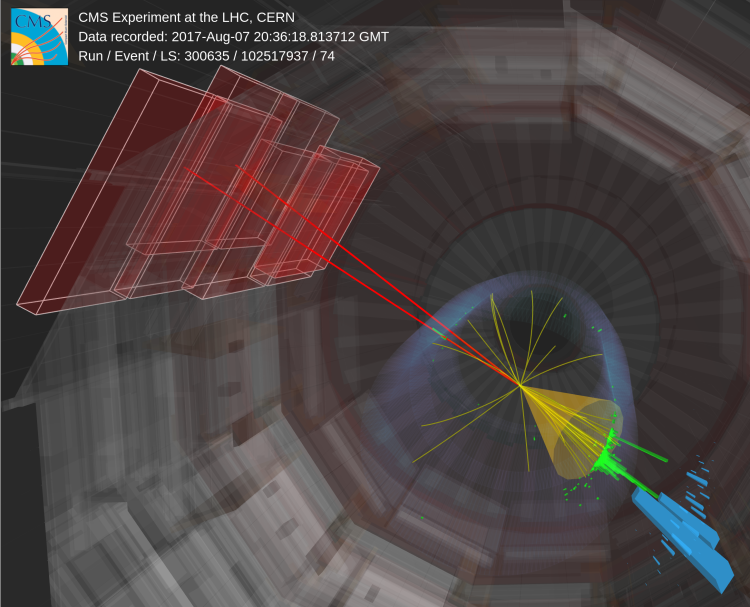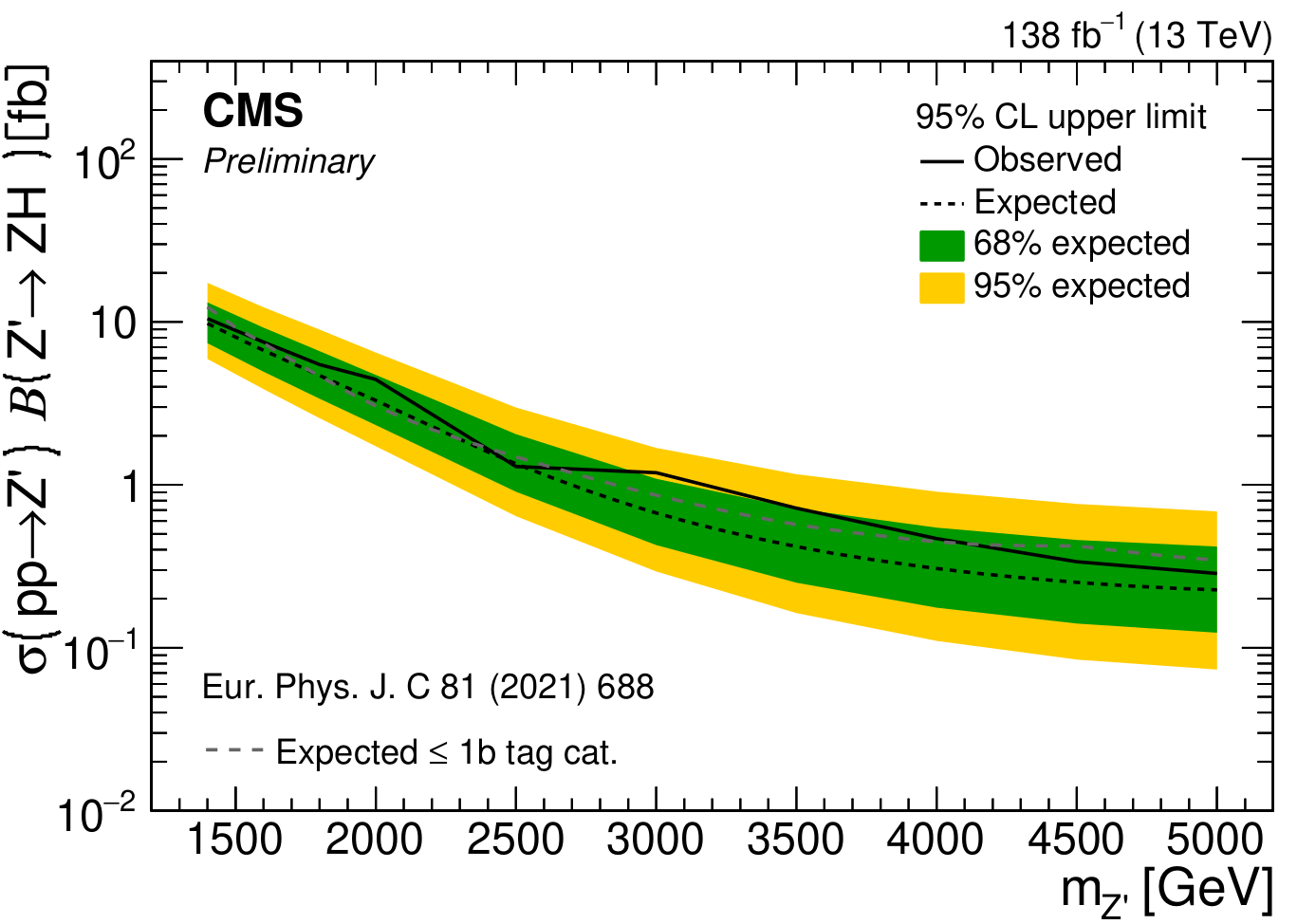
The discovery of the Higgs boson (H), particularly with its decay into two electroweak gauge bosons WW and ZZ, marked a milestone in particle physics. This groundbreaking discovery not only answered long-standing questions but also inspired new approaches to explore physics beyond-the-standard model (BSM). One intriguing possibility arising from BSM scenarios is the resonant production of new particles that decay into combinations of H, W, and Z bosons, presenting promising avenues for uncovering new particles and phenomena.
Numerous searches for these new particles have been conducted using data collected by the LHC experiments. These searches explore a multitude of final states, exploiting the diverse decay modes of the standard model bosons. The experimental signatures associated with these searches exhibit considerable variety because the final states with the smallest backgrounds also have the smallest probability of occurring. Finding the right balance between a high probability of a signal occurrence and a signature that can be separated from the large background poses a significant challenge. In the context of searches for resonances decaying to ZH pairs, signatures that have been exploited in the past are the leptonic decays of the Z boson to pairs of electrons, muons or neutrinos, together with the H boson decay to a pair of b quarks (H→bb). Once this signature has been searched for, the natural question is: “Did we miss something by not looking for another signature?”
Searches like this are often compared to finding a needle in a haystack. In our case, the haystack is the vast amount of background data and we are looking for tiny needles with different sizes, hues, and made from different materials. Now, imagine that someone has already built a machine searching for the largest possible needles. By sifting through the haystack, parts of the hay that looked similar to the large needles got removed as well. We are then left with a haystack that remains huge and made of bits of hay as small as the possibly hidden small needles, the difficult ones to find. We need to come up with a clever way of looking for them.
Figure 1: A proton-proton collision at a centre-of-mass energy of 13 TeV recorded with the CMS experiment. This event is compatible with the production of a very heavy particle decaying into a Z and a Higgs boson. The Z boson decays into two muons (red lines) and the Higgs boson decays into a pair of charm quarks (green and blue towers within the yellow cone). For a more detailed view, you can zoom in and rotate the interactive event display.
The CMS experiment has recently performed a search aimed at detecting the resonant production of a heavy particle decaying into a ZH but removing the H → bb decays (the big needles), which have already been searched for previously. The new search targets the small needles left in the haystack: the more challenging H boson decays into four quarks (H → qqqq) or a pair of charm quarks (H → cc) -- a display of a collision event that looks like such a signal is provided in Fig. 1. These final states have not yet been explored in BSM searches because it is difficult to separate them from the background processes. To tackle this challenge, the CMS team, led by Dr. Andrea Malara, a postdoctoral researcher from ULB in Belgium, employed state-of-the-art machine learning techniques, including the ParticleNet algorithm. This sophisticated algorithm plays a crucial role in discerning the signal from the background, contributing significantly to the sensitivity of the analysis. The analysis shows that it is possible to improve the sensitivity with respect to previous results for masses of the new particle exceeding 2.4 TeV. No traces of new phenomena are found with this search, but this study demonstrates once more that we have another powerful tool at hand to look for small needles in the haystack of LHC data. With it, we will be able to probe scenarios of new physics that were previously considered inaccessible to us, redefining once more the loose boundaries between science and science fiction. In addition, we exploit this result to extract information on what the new physics doesn’t look like, deriving constraints on the production cross section of the predicted particle (Z’), as shown in Fig. 2.

Figure 2: Expected and observed upper limits at 95% confidence level as a function of the mass of a new particle decaying to ZH pairs. The results from the previous analysis are also shown.
As more data samples are being recorded by the CMS experiment, measurements with more refined techniques become possible, offering further avenues for exploration.
Read more about these results:
-
CMS Physics Analysis Summary (B2G-23-008): "Search for a heavy resonance decaying into ZH for final states with two electrons, two muons, or missing transverse momentum and an energetic jet "
-
Display of collision events: CERN CDS
-
@CMSExperiment on social media: LinkedIn - facebook - twitter - instagram
- Do you like these briefings and want to get an email notification when there is a new one? Subscribe here

